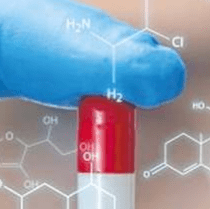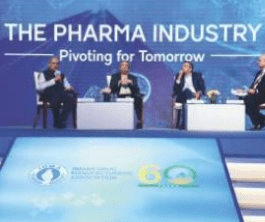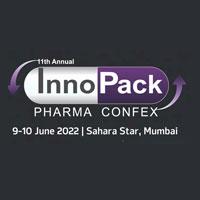
By Dr. Tim Sandle
Advances in biotechnology have led to a new generation of vaccine treatments entering development and trial. These innovations include the use of genetically modified organisms and vaccines based on mRNA, where human cells are programmed to develop antibodies against specific diseases. While these vaccines appear ‘new’ to the general public, research dates back several decades.
As with any pharmaceutical development, there are technical challenges and regulatory hurdles. Balanced with the possibility of the types of serious illnesses that can be addressed, a careful path needs to be followed in terms of meeting regulatory expectations and with getting products to market speedily.
The path towards vaccine development is strictly controlled, with patient safety and vaccine efficacy as the two key factors (1). The process begins with laboratory testing, in relation to laboratory-based methods and then animal testing. This is followed by clinical trials involving humans, to enable data to be assessed for how well the vaccine works, how long the vaccine lasts for (protective efficacy) and for any risks that were not apparent using animal models.
Some vaccines are developed using novel methods intended to increase the volume and speed of production compared to other types of vaccines, enhance product stability and bring about strong immune responses. This includes experimental mRNA vaccines that could overcome the shortcomings of other vaccines. Other vaccines are developed using existing methods used for vaccines for other diseases.
Each of these steps is covered by Good Clinical Practices and by Good Manufacturing Practices (at a phase-appropriate level), as outlined in this article. These are presented alongside the technological challenges.
Development stages and technological challenges
The development of a vaccine needs to be planned under the principles of Quality by Design and Quality Risk Management. Consideration must be given to the design space and the design of experiments.
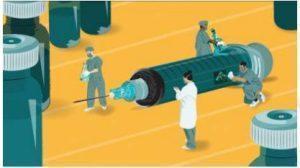 The development process begins with the manufacture of small-scale batches. These involve the taking of measurements to understand and adjust the production operation, supported by laboratory tests to assess the suitability and shorter-term stability of the formulation. Depending on the outcome of data reviews, a decision is taken whether further development work is worthwhile and then whether to scale up production.
The development process begins with the manufacture of small-scale batches. These involve the taking of measurements to understand and adjust the production operation, supported by laboratory tests to assess the suitability and shorter-term stability of the formulation. Depending on the outcome of data reviews, a decision is taken whether further development work is worthwhile and then whether to scale up production.
Additional development work will be based on laboratory models, including in vitro studies and in vivo studies (using animal models). By this stage the focus is with how the vaccine triggers an immune response and the extent that it functions to prevent infection. Both repeatability and robustness (to different variables) help to strengthen such assessments.
There are various factors to consider and developing vaccines is not straightforward, given relatively high failure rates and high time and monetary costs required to establish the complex processes, and capabilities for production. Some of these challenges are outlined below.
Science and risk-based approaches
The development of any biotechnological product is fraught with difficulties and misdirection. With mRNA vaccines, the main obstacles faced by developers are arguably:
- Unintended effects: With patient safety, a risk arises that the mRNA strand contained within the vaccine could elicit an unintended immune reaction (particularly inflammation and autoimmune reactions).
- Delivery. The effective action of a vaccine rests on the mechanism of delivery. The complexity arises because when some vaccine types, such as mRNA, enters the human body it is rapidly broken down. Hence, stabilization is essential to protect the mRNA strand until it reaches its target. The strategy involves incorporating the MRNA within a larger molecule. This can be enhanced by further containment within particles or liposomes (spherical vesicles composed of lipid bilayers). For the COVID-19 vaccines the mRNA is protected by nanoparticles.
- A further consideration for delivery is finding the most effective way for the vaccine to reach the cell. For the vaccine to be effective, it must penetrate the barrier of the lipid membrane in order to reach the cytoplasm to be translated to functional protein (2).
- Storage. Most vaccines are limited by their storage time (stability) and required holding temperatures. Some vaccines require storage within a freezer or refrigerator, which affects their global distribution. To achieve vaccines that do not require cold supply chain reliance will significantly increase their applicability. A way forwards is with developing lyophilization as an ambient storage method for a wider range of vaccines.
Data science and artificial intelligence
To advance the development of vaccines there has been growth in the fields of data science, informatics, and artificial intelligence. This includes the field of bioinformatics, an area that applies computational tools to better understanding of the biological sciences. In particular, bioinformatics has transformed immunological research (the discipline of immunoinformatics). Development has been enhanced in recent years through the application of artificial intelligence. Platforms have been developed within academia and industry to find vaccine targets and epitopes (portions of foreign proteins, or antigen, that are capable of stimulating an immune response) that could transform the vaccine discovery process.
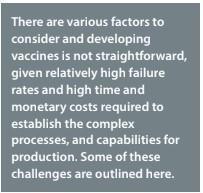 Examples of artificial intelligence applications include Graph Convolutional Neural Networks (GCNN) for drug discovery applications. This is a network that seeks to extract features via encoding the adjacency information within data. Application examples are with drug property prediction, protein interface estimation, reactivity prediction and drug–target interactions (such as bacterial antigen predictions). In addition, generation of context-based models extract representations from sequences to predict drug–target interactions; and recurrent neural networks (RNNs) and long short-term memory (LSTM) networks assist with quantitative structure–activity relationship and function prediction. Another application is with deep learning models such as Generative Adversarial Networks (GANs) which have been used to create data-oriented molecules. These technologies have also been applied towards data augmentation and cross-validation. These approaches have been implemented to predict vaccine candidates compared with various bacterial and viral pathogens. Machine learning has additionally been used for processing complex data, such as reading through the global immunization registries that are used for tracking, recording, and predicting vaccine safety.
Examples of artificial intelligence applications include Graph Convolutional Neural Networks (GCNN) for drug discovery applications. This is a network that seeks to extract features via encoding the adjacency information within data. Application examples are with drug property prediction, protein interface estimation, reactivity prediction and drug–target interactions (such as bacterial antigen predictions). In addition, generation of context-based models extract representations from sequences to predict drug–target interactions; and recurrent neural networks (RNNs) and long short-term memory (LSTM) networks assist with quantitative structure–activity relationship and function prediction. Another application is with deep learning models such as Generative Adversarial Networks (GANs) which have been used to create data-oriented molecules. These technologies have also been applied towards data augmentation and cross-validation. These approaches have been implemented to predict vaccine candidates compared with various bacterial and viral pathogens. Machine learning has additionally been used for processing complex data, such as reading through the global immunization registries that are used for tracking, recording, and predicting vaccine safety.
A further challenge is with process validation. The standard regulatory requirement is for full-scale batches to be produced. Given the scarcity of the material and the urgent need (in most cases) for vaccines, adopting a risk-based strategy based on ICH Q9 to show equivalent validation at a smaller scale is required together with obtaining regulatory agreement. This can be supported by the application of process analytical technology to provide real-time results to feed into a continuous validation paradigm. The core objective is to demonstrate the consistency of the manufacturing process. As the characterization of vaccine technology continues, adopting a risk-based approach can be advanced. This is provided that different biotechnology companies are prepared to share knowledge.
Overcoming these challenges requires a combination of knowledge capture, scientific reasoning, learning from data analysis, and risk-based methodologies.
Long-term safety and effectiveness
Another hurdle with vaccine development is with ensuring safety. Some vaccines are associated with the inhibition of antigen expression and may negatively affect the immune response. Other safety concerns include local and systemic inflammation, stimulation of auto-reactive antibodies and toxic effects of any non-native nucleotides and delivery system components (triggering inflammation and autoimmunity). Each of these needs to be demonstrably overcome during the drug development phase.
 With effectiveness, demonstrating the stability of the vaccine is important given that degradation by both enzymatic and chemical pathways can occur (3). Effectiveness is also hampered, despite vaccination using COVID-19 vaccines, by a lack of experience of mass vaccination of some types of products like mRNA vaccines and this means understanding the relative effectiveness is currently limited across time and geographically.
With effectiveness, demonstrating the stability of the vaccine is important given that degradation by both enzymatic and chemical pathways can occur (3). Effectiveness is also hampered, despite vaccination using COVID-19 vaccines, by a lack of experience of mass vaccination of some types of products like mRNA vaccines and this means understanding the relative effectiveness is currently limited across time and geographically.
Clinical trials
In order to prove efficacy, vaccine research needs to lead to clinical trials. As well as demonstrating efficacy against the specific pathogen, trials need to establish the stability of the vaccine and the optimal method for delivery (such as intramuscular, intravenous, nasal and others). Currently, these types of data are limited, and longer-term trial data is required. Widely sharing the knowledge from trials between pharmaceutical companies will help to edge vaccines forwards. Furthermore, in pandemic situations space should open up to enable accelerated clinical development, again adopting a risk-based approach together with regulatory dialogue.
Production
It is currently uncertain, in many cases, how effectively production methods can be upscaled to enable mass production. Essential to the production process is purification, where several steps will be required to remove reaction components. The more steps required, then the lower the resultant yield (4).
Some the components, such as polymerases and capping enzymes, are only available for limited volumes and many have a high cost, meaning that many companies examining mRNA vaccines require seed funding to keep afloat during the development phase.
Centrality of GMP
All immunologicals must be produced under conditions consistent with Good Manufacturing Practice (GMP). This requires a minimum specification for the facilities, the qualifications and training of the staff, sourcing of raw materials, production equipment and production methods, in-process and release quality control, storage of intermediates and final product, record keeping and quality assurance. These aspects will be covered by the manufacturing and product licences, the approval of which will also to be subject to a satisfactory outcome of inspection by the regulatory authorities. Outside of formal guidance, current Good Manufacturing Practice extends to those aspects of best practice that evolve in between updates to guidances and regulatory standards (5).
Important GMP controls include:
- Multi-step protocols.
- Patient safety control.
- Product potency controls.
- Contamination control, including sterility.
For the scale-up, adherence to GMP becomes more important and a suitable quality control strategy and an effective contamination control strategy need to be developed. The suitability of plants requires the assessment of potential risks and taking appropriate actions (6).
With quality control, this will include the selection of each component used in the manufacturing process, starting with raw materials; intermediate testing; and an assessment of the finished product. The approach to quality control needs to be holistic and sufficient to understand the whole manufacturing process. The types of samples selected, and tests undertaken must connect with the process validation strategy, where Critical Quality Attributes and Critical Process Parameters have been identified so that process capability and manufacturing consistency can be understood. Given that quality cannot simply be tested by end-product testing, each step of a manufacturing process must be controlled.
For the contamination control strategy, because the end product is designed to be sterile, then sufficient assurance of sterility needs to be built into the manufacturing process supported by microbiological monitoring at suitable control points. The strategy should shape the aseptic filling design space.
Manufacturing
The manufacturing of vaccines must take place within classified cleanrooms. Typically, intermediate processing takes place under EU GMP Grade C (ISO 14644 class 8 in operation) conditions; and aseptic filling at EU GMP Grade A (ISO 14644 class 5 in operation) conditions. Environmental controls must be in place. This extends to particulate, temperature, humidity, and pressure controls. Microbiological environmental monitoring is performed to ensure that microbiological risks are at a minimum during vaccine dispensing.
Clinical trials
The last phase of development is with clinical trials. Here the manufacturer prepares batches (GMP-grade materials must be used for human clinical trials) and assesses the vaccine in three phases of clinical trials (7). Across these phases larger numbers of subjects are required (8).
- Phase I studies of a new vaccine are the first that involve people, typically 20 to 100 subjects (human pharmacology studies). Such trials the highest dose of the new treatment that can be given safely without causing severe side effects. Such studies also help to decide on the best way to give the new treatment, considering:
- Does the vaccine trigger the expected immune response?
- Is the vaccine safe to proceed into larger studies?
- Which doses of the vaccine are adequate?
- Phase II studies (therapeutic exploratory studies) occur when a new treatment is found to be safe in phase I clinical trials. Such studies typically involve several hundred people. The objective depends on the goal of the treatment, for example many clinical trials look to see if people getting the new treatment live longer than most people do without the treatment. The focal points are:
- What is the best dose(s) to use (immunogenetic safety)?
- What are the most common side effects?
- How many doses are needed (time endurance)?
- Does the vaccine trigger a good immune response in a broader population?
- Phase III clinical trials (clinical efficacy and safety studies) compare the safety and effectiveness of the new treatment against the current standard treatment. It is important that study participants are randomized so they receive either the standard treatment or the new treatment. When possible, studies should be double-blind so that neither the subject nor the medic knows which vaccine has been administered.
Clinical trials must be based on sound scientific thinking and ethical considerations. The overriding objective of the trials is to measure a reduction in number of people with symptoms, severe disease or diagnosed with the infection. The assessment of these criteria helps scientists to measure the efficacy of the vaccine.
Synthesis
The scientific evaluation of manufacturing and laboratory data, together with clinical trial results, must demonstrate that the overall benefits of the vaccine outweigh their risks, including any side effect. This information must also be provided to regulators, including all testing against approved specifications and any associated investigations.
Accelerating the process
At times of health emergencies, vaccine development will need to take place more quickly. While it is important that adherence to GxPs is maintained, there are practices that manufacturers can undertake, such as (9):
- Mobilizing more human resources simultaneously to analyses results from earlier studies more quickly.
- Using project planning to identify the next steps in terms of resources, funding and regulatory strategy.
- Combining clinical trial phases.
- Conducting some studies in parallel.
- Increasing manufacturing capacity.
Regulatory approval
To obtain approval for the vaccine, the pharmaceutical company must also show that large scale commercial manufacturing produces vaccines of the required quality can be undertaken. This requires the place of manufacture to have been licensed for this purpose and for process validation to be performed (10). Most regulators have special committees composed of experts in vaccination to assess new vaccines. The regulator will assess:
- Whether the vaccine meets rigorous standards for safety, efficacy and quality.
- If the vaccine is manufactured and controlled in approved, certified facilities.
- That pharmaceutical standards that are compatible with large-scale commercialization.
Time can also be saved where there is early and continuous dialogue instigated between vaccine manufacturers and regulators
In certain circumstances, regulators will elect to fast-track vaccines in the event of a public health emergency. A recent example of this was with the COVID-19 vaccines (11). The fast-track process involves covering all phases of development but undertaking these in a compressed time. The application of scientific knowledge and past experience of vaccine production is essential for the faster process.
Some regulators also permit a rolling review process for agreed medicines. Under these conditions, the regulator may agree to start assessing data as they become available during the development process. This helps to expedite the approval process. Similarly, some manufactures can also gain approval to commence manufacturing prior to obtaining marketing authorization. This enables vaccines to be distributed quickly once regulatory authorization has been obtained.
Release of commercial batches
The test release process must include an assessment of all tests used in the process validation and these must be assessed against the product specification. In some territories, such as Europe, an official medicines control laboratory must perform an additional independent control for each batch of vaccine. This acts as a compliance check of the manufacturer’s own test results.
Other factors that introduce complexity include supply chain logistics.
Pharmacovigilance
Pharmacovigilance requires that vaccine safety and use in real life is assessed across the shelf-life of the released product. Continued scientific and clinical evaluation needs to take place to assess how effective the vaccine continues to be in protecting people against diseases and to note any adverse events. To maintain patient safety, the benefits must continue to outweigh any potential risks.
A system for safety monitoring and risk management needs to be in place, with measures in place for:
- Providing advice to minimize risk.
- Reporting suspected side effects.
- Detecting any potential side effects.
- Conducting rigorous scientific assessments of all safety data.
- Introducing any necessary mitigating actions in the event of adverse events.
Summary
The vaccine development process is driven by scientic knowledge and ethics, with an importance placed upon clinical trials and evidence-based medicine. This involves meeting the requirements for quality, safety and efficacy. Developing vaccines in relation to health emergencies can be accelerated by collecting and disseminating knowledge and supported by a regulatory framework that enables the implementation of thorough, but expediated, processes.
 Tim Sandle is the author of the book Digital Transformation and Regulatory Considerations for Biopharmaceutical and Healthcare Manufacturers, Volume 1: Digital Technologies for Automation and Process Improvement, available via
Tim Sandle is the author of the book Digital Transformation and Regulatory Considerations for Biopharmaceutical and Healthcare Manufacturers, Volume 1: Digital Technologies for Automation and Process Improvement, available via
the PDA Bookstore:
https://www.pda.org/bookstore/product-detail/5897-digital-transformation-volume-1
References:
1. Pardi, N. et al. In vitro transcription of long RNA containing modied nucleosides. Methods Mol. Biol. 2013; 969, 29–42
2. Benteyn, D. et al. mRNA-based dendritic cell vaccines. Expert Rev. Vaccines, 2015; 14, 161–176
3. Muralidhara, B. K. et al. Critical considerations for developing nucleic acid macromolecule based drug products. Drug Discov. Today, 2016; 21, 430–444
4. Robinson, J. Vaccine production: main steps and considerations. In Bloom, B. and Lambert, P. (Eds.) The vaccine book (2nd ed.), Academic Press, San Diego (2016), pp. 77-96 5. Pardi, N. et al. In vitro transcription of long RNA containing modied nucleosides. Methods Mol. Biol. 2013; 969,
6. Silva, A. et al Advances in Vaccines, Current Applications of Pharmaceutical Biotechnology. 2020; 171: 155–188
7. Pardi, N. et al. mRNA vaccines — a new era in vaccinology. Nat Rev Drug Discov 2018; 17, 261–279
8. EMA. COVID-19 vaccines: development, evaluation, approval and monitoring, European Medicines Agency, https://www.ema.europa.eu/en/human-regulatory/overview/public health-threats/coronavirus-disease-covid-19/treatments-vaccines/vaccines-covid 19/covid-19-vaccines-development-evaluation-approval-monitoring
9. EMA. Draft toolbox guidance on scientic elements and regulatory tools to support quality data packages for PRIME marketing authorisation applications, February 2021 https://www.ema.europa.eu/en/documents/scientic-guideline/draft-toolbox guidance-scientic-elements-regulatory-tools-support-quality-data-packages prime_en.pdf
10. Wijnans, L. andVoordouw, B. A review of the changes to the licensing of inuenza vaccines in Europe. Influenza and Other Respiratory Viruses. 2015; 10 (1): 2–8
11. Bok, K. et al. Accelerated COVID-19 vaccine development: milestones, lessons, and prospects. Immunity, 2021; 54 (8): 1636–1651



